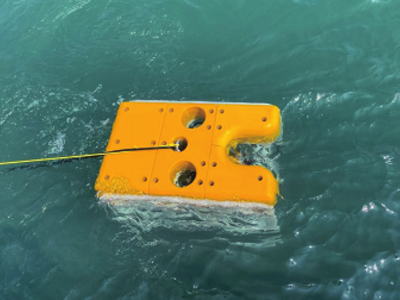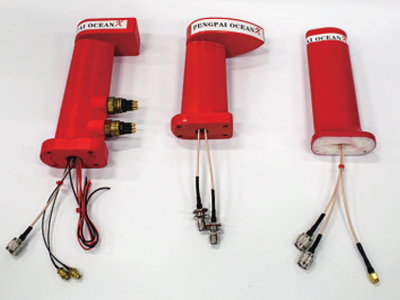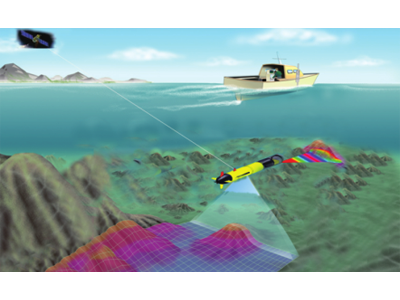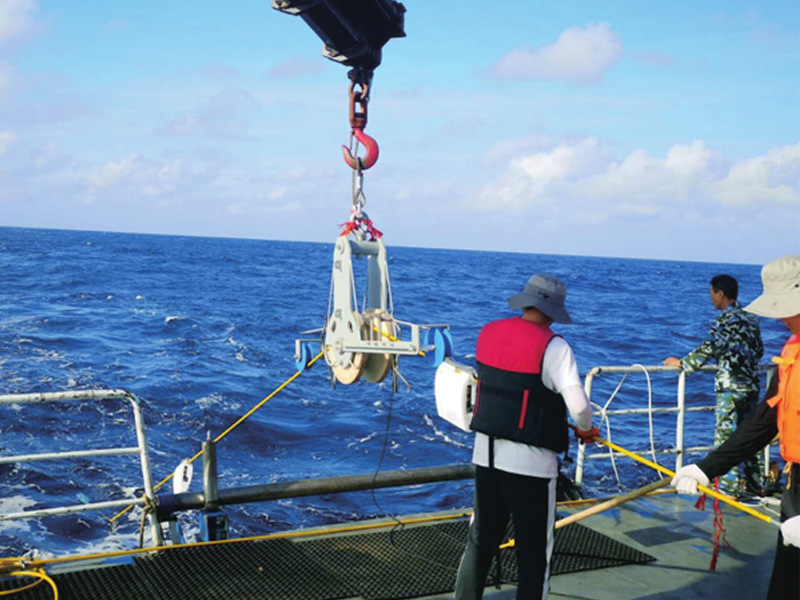China's "Fourteenth Five-Year Plan" proposes to implement a number of forward-looking and strategic national major scientific and technological projects in frontier areas such as deep and deep oceans. Deep-sea exploration, development and utilization of marine resources have become emerging strategic areas. Focusing on the deep sea and the acquisition of deep-sea resources has become a national strategy.
The resources of the international seabed area, which covers an area of 251.7 million square kilometers and accounts for 49% of the earth's surface area, are the common heritage of all mankind. In order to open up new sources of resources in China and safeguard China's rights and interests in developing international seabed resources, the "China Ocean Mineral Resources Development Association" was established in 1990. On March 5, 1991, China was registered by the United Nations Seabed Preparatory Commission as a "pioneer investor in deep-sea mining". Since then, China has successively obtained five exploration areas on the international seabed, covering an area of about 230000 square kilometers.
The development of deep-sea seabed resources involves many fields and is a huge systematic project. Most of the deep-sea mineral resources are located at the seabed of 3000~6000 meters. The sea surface and seabed environment are very complex, and the environmental protection requirements are extremely strict. Most mining areas are far away from China, and lack the necessary support conditions. The development of resources is very difficult, and needs to be gradually promoted by stages. Therefore, investigation and exploration become the most important basic project before mining.
Deep-sea resource survey and exploration equipment can be roughly divided into two categories. The first category is general conventional survey equipment, which is easy to operate, relatively low cost and very effective in coarse grid survey, and has become the preferred equipment for scientific survey ships in China. The second category is large-scale complex mobile survey equipment, which mainly refers to the deep-sea (defined in this paper below 1000 meters) robot system, including four categories: manned submersible (HOV), remote underwater vehicle (ROV), autonomous underwater vehicle (AUV), and deep-sea towing robot (DTS, referred to as deep towing). These equipment with different characteristics and advantages complement each other with other measuring instruments such as multi-beam and various positioning systems to form a high-end survey and survey system for ocean resources.
Since the 1990s, China's autonomous underwater robot technology has made considerable progress in the international seabed regional mineral resources survey. Its good maneuverability, high adaptability to complex seabed terrain, large range of autonomous navigation ability, no need to bind the mother ship, controllable high-precision track, and adaptive autonomous control ability make it a powerful means for the investigation of polymetallic nodules, cobalt-rich crusts and hydrothermal sulphides, It has become a kind of widely used important equipment in the fields of deep-sea resource survey, marine scientific research and marine engineering. Autonomous robot technology is very complex, ubiquitous and driving. Accelerating the development of a new generation of autonomous underwater vehicles is of great significance.
This paper briefly describes the current situation of foreign deep-sea autonomous robots, and focuses on the development process of China's deep-sea autonomous robots from scratch, from shallow to deep, and from difficulties. Taking the research and development process of the representative "Qianlong" series of autonomous underwater robots as an example, it gives the technical challenges faced, as well as the application and some achievements in the survey of ocean mineral resources. At the end of the paper, it puts forward some ideas and suggestions for the future development prospects.
1、 Research status of deep-sea autonomous robot abroad
Autonomous underwater vehicles (AUVs) are the focus of attention in the world. Many domestic scholars have commented on the development of AUVs in the world. This article is not intended to be described in detail, but only for a brief discussion. The research of autonomous underwater vehicle abroad has a history of nearly 70 years. Western developed countries led by the United States, such as the United Kingdom, France, Norway, Canada, Germany and the former Soviet Union, have invested heavily in the research and development of various types of deep-sea robots, which have been successfully used in deep-sea operations such as marine resources survey, seabed geological survey and underwater search.
In the 1950s, the University of Washington in the United States developed the world's first AUV - SPURV. In 1977, France built the world's first AUV, the "Epaulard", with a depth of 6000 meters. The "Epaulard" had conducted a survey of polymetallic nodules at a depth of 5400 meters in the Pacific Ocean. In the following five years, its underwater navigation exceeded 805 kilometers and took 200000 photos. In 1994, the ABE deep-sea robot developed by the Woods Hole Institute of Oceanography (WHOI) of the United States completed its first scientific investigation. Since 1996, ABE has completed more than 200 diving operations, and has been used for deep-sea hydrothermal investigation ever since. At the same time, Autosub in the UK, Theseus in Canada and MT-88 in Russia were all applied in deep-sea scientific research and marine resources survey. In recent years, with the continuous progress of deep-sea robot technology, a number of deep-sea robots have emerged, such as the Sentry deep-sea robot in the United States, the Autosub6000 in the United Kingdom, the HUGIN4500 in Norway, and the R2D4 in Japan. Commercialized deep-sea robots have also emerged, such as the Bluefin-21 developed by Tuna Robotics, and the REMUS6000 produced by Kongsberg. In 2011, the REMUS6000 successfully searched the black box of the crashed airliner AF447, The wreckage of the heavy cruiser UUSIndianapolis was found in 2017; Bluefin-21 participated in the search work of Malaysia Airlines MH370 in 2014, and Sentry, Autosub6000 and R2D4 carried out scientific research missions in the ocean hydrothermal region and submarine volcanic region for many times.
Table 1 Main deep-sea autonomous underwater robots abroad
Remarks: Sentry (a), REMUS 6000 (b), Autosub6000 (c), r2D4 (d)
Figure 1 Some deep-sea autonomous underwater robots abroad
Looking at the history of global AUV development, we can draw the following views:
⑴ The United States has invested the most in AUV, and its history of AUV development is representative.
⑵ Although the history of AUV development is long and tortuous, it is quite similar to the history of AI development, because AUV is more dependent on AI technology. Today, the development of AI technology in full swing is driving AUV synchronization to a new stage. Obviously, the new generation of intelligent AUV should be our focus.
⑶ It is a long process for AUVs to go out of scientists' laboratories and realize commercialization, which reflects the scientific and technical difficulties of AUVs. By 2015, the total number of AUVs in the world was about 500, and nearly half of them were test-beds. In recent years, some commercial AUVs have emerged, such as 4, 5, 6, 7 and 8 in Table 1, which have been recognized in the international market and are moving towards maturity. In contrast, China's AUV commercial market has not yet formed.
(4) The "OCEAN" international conference is a window to observe the attention of various types of underwater robots. The number of AUV papers published in the "OCEAN" conference each year is far more than that of other types of underwater robots. This shows that AUV still has many cutting-edge scientific and technological issues to be further explored.
2、 Development history of deep-sea robots in China
1. Overview of China's deep-sea robot development
Deep-sea robots are divided into manned systems and unmanned systems, including five categories, as shown in Figure 2.
Figure 2 Categories of deep-sea robots
China's deep-sea robot research began in the early 1990s. In the past 30 years, China has successfully developed "CR-01", "CR-02" and "Qianlong" series of autonomous underwater robots; "Haidou" series autonomous remote control underwater robot; "Hailong", "Haima", "Starfish" remote controlled underwater robots and towed underwater robots; The manned submersible "Jiaolong", "Deep Sea Warrior" and "Struggler", these high-tech equipment, with a working depth of 4500 meters to 11000 meters, basically meet the needs of China's deep-sea scientific research and resource survey. Compared with similar foreign equipment, its technical level is generally the same or leading.
The achievements of China's deep-sea robot equipment are closely related to the strong support of the country. Under the guidance of the national strategic needs, it has gathered the domestic advantages, gathered many domestic top experts and young elites, and worked together to solve key problems. It took less than half of the time abroad to make China's deep-sea robot into the international advanced level. The following is a brief introduction of the development of deep-sea robots in China, taking deep-sea autonomous robots as an example.
2. Development history of deep-sea autonomous robot
Autonomous underwater robots with a depth of less than 1000 meters are referred to as deep-sea autonomous robots. The research of deep-sea autonomous robot is the first major project supported by the national "863" plan, and has been continuously supported by the Ministry of Science and Technology and COMRA since then. Its development process is representative and can be divided into three stages:
The first stage is the start of independent exploration
During the "Eighth Five-Year Plan" period, with the support of the national "863 Plan", including the Shenyang Institute of Automation (SIA) of the Chinese Academy of Sciences, the 702 Research Institute of China National Shipbuilding Corporation, Shanghai Jiaotong University, Harbin Engineering University, and the Institute of Acoustics of the Chinese Academy of Sciences, etc., formed a joint research team, which was composed of eight experts, Led their respective teams to carry out the research and development of China's first unmanned cableless underwater robot "Explorer" with a depth of 1000 meters. The design, manufacture, final assembly, commissioning and sea trial were all independently completed in China. At that time, there was no corresponding supporting industrial chain in China. The required materials, parts, instruments, meters, sensors, etc. were mainly developed by relevant domestic units, and a small number of components and materials were imported from abroad, The research and development work was completed in 1994, and the 1000m deep sea test was carried out in Hainan Island of China in the same year. The test results reached the expected goal, which became the beginning of China's march into the field of deep-sea robots. The success of the project filled a gap in this field, making China have a place in this field and become the basis for future international cooperation.
In the second stage, international cooperation accelerated its growth
Since 1992, the joint research team led by Shenyang Institute of Automation has cooperated with the Institute of Marine Technology of the Far East Branch of the Russian Academy of Sciences (IMTP) to develop an autonomous underwater vehicle with a depth of 6000 meters. This project has been supported by the major projects of the National "863" Plan and the State Administration for Foreign Affairs. China and Russia have given full play to their respective technical advantages and worked closely with each other. In 1995, "CR-01" completed the sea trial in the Pacific Ocean and carried out practical exploration of polymetallic nodule mining areas. In 1997, "CR-01" once again participated in the Pacific expedition organized by the Oceanic Association, and obtained a large number of scientific data and first-hand information from China's reserve. "CR-01" is China's first 6000-meter deep-sea robot, making China one of the few countries in the world with this technology and equipment.
"CR-01" takes the survey of the abundance of polymetallic nodules on the Pacific Ocean floor as its application target. Its maximum working depth is 6000 meters, its maximum speed is 2 knots, and its endurance is 10 hours. It is equipped with collision avoidance sonar, side-scan sonar, shallow layer profiler, camera, video recorder and other sensor equipment, and can carry out underwater photography, photography, seabed topography and profile survey, and hydrological and physical survey. With the support of the National 863 Program, the joint research team also carried out the development and test of "CR-02". "CR-02" improves and improves the mobility of the vertical plane on the basis of "CR-01", and is mainly applicable to the investigation of deep-sea cobalt-rich crusts and marine survey under complex terrain.
1661307541262784.jpg
Remarks: (a) "Explorer" AUV, (b) "CR-01" 6000m AUV, (c) "CR-02" 6000m AUV
Figure 3 Deep-sea autonomous underwater vehicle (SIA)
The third stage is independent innovation and development
In the past ten years, with the support of the national "863" plan, the China Oceanic Association and the Chinese Academy of Sciences' strategic pilot project, Shenyang Institute of Automation has developed the "Qianlong" series and the "Exploration" series of autonomous underwater robots for the investigation of ocean polymetallic nodules, the exploration of hydrothermal resources, the scientific investigation of cold springs and marine scientific research.
"Qianlong" series includes "Qianlong No.1", "Qianlong No.2", "Qianlong No.3" and "Qianlong No.4", with a diving depth of 4500 meters to 6000 meters. The "Exploration" series of autonomous underwater robots is a series of autonomous underwater robots developed for marine scientific research, with a submergence depth of 100 meters to 4500 meters.
Table 2 Main deep-sea autonomous robots in China
1661307609488176.jpg
"Qianlong 1" is developed with the support of the "12th Five-Year Plan" project of the China Oceanic Association. It takes the survey of ocean polymetallic nodule resources as its main objective. It has carried out the survey of Pacific polymetallic nodule many times since 2013. In 2016, the navigation and positioning, acoustic detection, optical detection and operational use of "Qianlong 1" were upgraded, and it has now been delivered to the marine survey ship for use, To provide equipment support for completing the exploration contract for polymetallic nodules signed by COMRA and the International Seabed Authority.
Figure 4 "Qianlong 1" and "Qianlong 4" 6000m autonomous underwater robots
"Qianlong 2" is developed with the support of the National 863 Plan and is mainly used for the investigation of oceanic polymetallic sulphides. In order to meet the needs of the complex terrain operation in the deep-sea hydrothermal region, "Qianlong 2" adopts a non-rotating vertical flat shape, equipped with a rotating propeller and a rotating rudder, so that it has good vertical mobility and navigation stability. "Qianlong 2" is also the first underwater robot in China to obtain the classification certificate of China Classification Society (CCS). Since 2017, with the support of the national key research and development plan, Shenyang Institute of Automation has upgraded the technology of "Qianlong 2", which has greatly improved its endurance, ultra-short baseline positioning, detection load carrying, and has the ability to automatically collect water samples.
Figure 5 "Qianlong 2" and "Qianlong 3" 4500-meter autonomous underwater robots
"Qianlong No.3" is developed with the support of COMRA, with the main goal of completing the resource survey of the oceanic polymetallic sulphide mining area. "Qianlong No.3" is an improved type based on "Qianlong No.2", which has a great improvement in reliability, stability and detection efficiency, and is suitable for complex terrain operations in the deep-sea hydrothermal region. The sea trial and pilot application will be completed in May 2018. Since 2019, "Qianlong No.3" has been used for scientific research in the South Atlantic Ocean and the Southwest Indian Ocean, providing a basis for the comprehensive investigation of submarine hydrothermal activities and ecological environment in the region.
"Qianlong No. 4" is a product-based 6000m deep-sea autonomous underwater robot purchased by COMRA. Its main technical indicators are the same as "Qianlong No. 1". In 2020, "Qianlong 4" carried out the ocean survey task for the first time and successfully delivered it to users. Since 2013, the "Qianlong" series of deep-sea autonomous underwater robots have carried out more than ten ocean scientific research, covering the Pacific, Indian Ocean and Atlantic Ocean, with more gold in the ocean
















